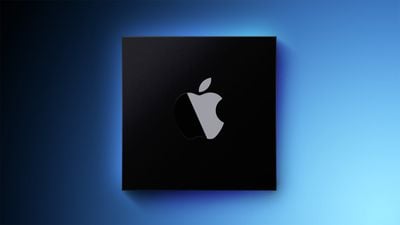TSMC's Next-Generation Chip Technology for Apple Silicon on Schedule
Apple chipmaker TSMC is making progress toward manufacturing 2nm and 1.4nm chips that are likely destined for future generations of Apple silicon, DigiTimes reports.

The manufacturing time frames for mass production of 2nm and 1.4nm chips have now apparently been determined: Trial production of the 2nm node will begin at in the second half of 2024, with small-scale production ramping up in the second quarter of 2025. Notably, TSMC's new plant in Arizona will also join 2nm production efforts. In 2027, facilities in Taiwan will start to shift toward production of 1.4nm chips.
TSMC's first 1.4nm node is officially called "A14" and will follow its "N2" 2nm chips. N2 is scheduled for mass production in late 2025, to be followed by an enhanced "N2P" node in late 2026.
Historically, Apple is among the first companies to adopt new, state-of-the-art chip fabrication technologies. For example, it was the first company to utilize TSMC's 3nm node with the A17 Pro chip in the iPhone 15 Pro and iPhone 15 Pro Max, and Apple is likely to follow suit with the chipmaker's upcoming nodes. Apple's most advanced chip designs have historically appeared in the iPhone before making their way to the iPad and Mac lineups. With all of the latest information, here's how the iPhone's chip technology is expected to look going forward:
- iPhone XR and XS (2018): A12 Bionic (7nm, N7)
- iPhone 11 lineup (2019): A13 Bionic (7nm, N7P)
- iPhone 12 lineup (2020): A14 Bionic (5nm, N5)
- iPhone 13 Pro (2021): A15 Bionic (5nm, N5P)
- iPhone 14 Pro (2022): A16 Bionic (4nm, N4P)
- iPhone 15 Pro (2023): A17 Pro (3nm, N3B)
- iPhone 16 Pro (2024): "A18" (3nm, N3E)
- "iPhone 17 Pro" (2025): "A19" (2nm, N2)
- "iPhone 18 Pro" (2026): "A20" (2nm, N2P)
- "iPhone 19 Pro" (2027): "A21" (1.4nm, A14)
The M1 series of Apple silicon chips is based on the A14 Bionic and uses TSMC's N5 node, while the M2 and M3 series use N5P and N3B, respectively. The Apple Watch's S4 and S5 chips use N7, the S6, S7, and S8 chips use N7P, and the latest S9 chip uses N4P.
Each successive TSMC node surpasses its predecessor in terms of transistor density, performance, and efficiency. Late last year, it emerged that TSMC had already demonstrated prototype 2nm chips to Apple ahead of their expected introduction in 2025.
Popular Stories
A new report from The Information today reveals much of the internal turmoil behind Apple Intelligence's revamped version of Siri.
Apple apparently weighed up multiple options for the backend of Apple Intelligence. One initial idea was to build both small and large language models, dubbed "Mini Mouse" and "Mighty Mouse," to run locally on iPhones and in the cloud, respectively. Siri's...
Apple in October 2024 overhauled its 14-inch and 16-inch MacBook Pro models, adding M4, M4 Pro, and M4 Max chips, Thunderbolt 5 ports on higher-end models, display changes, and more. That's quite a lot of updates in one go, but if you think this means a further major refresh for the MacBook Pro is now several years away, think again.
Bloomberg's Mark Gurman has said he expects only a small...
Apple may have updated several iPads and Macs late last year and early this year, but there are still multiple new devices that we're looking forward to seeing in 2025. Most will come in September or October, but there could be a few surprises before then.
We've rounded up a list of everything that we're still waiting to see from Apple in 2025.
iPhone 17, 17 Air, and 17 Pro - We get...
On this week's episode of The MacRumors Show, we catch up on the latest iOS 19 and watchOS 12 rumors, upcoming devices, and more.
Subscribe to The MacRumors Show YouTube channel for more videos
Detailed new renders from leaker Jon Prosser claim to provide the best look yet at the complete redesign rumored to arrive in iOS 19, showing more rounded elements, lighting effects, translucency, and...
YouTube channel Front Page Tech is back today with another video that provides a closer look at iOS 19's alleged design changes.
The video contains re-created renders of iOS 19, which are allegedly based on real footage of the software update, provided by sources within Apple. Overall, iOS 19 is expected to have a more glass-like, visionOS-inspired design, with added translucency for user...
Apple will be permanently closing its store at the Northbrook Court shopping mall in the Chicago suburb of Northbrook on April 26, the company has announced.
Apple has added the following notice to the store's web page:Thank you Northbook. Apple Northbrook is closing on April 26 at 7pm. We're still here for you. Please visit apple.com/retail to find your nearest store.Apple Northbrook opened ...
Apple released the first beta of iOS 18.5 last week, and so far the software update includes only two minor changes.
The changes are in the Mail and Settings apps.
In the Mail app, you can now easily turn off contact photos directly within the app, by tapping on the circle with three dots in the top-right corner.
In the Settings app, there is some new AppleCare+ information.
For ...
Apple's current struggles with Apple Intelligence and Siri began in early 2023 when AI head John Giannandrea sought approval from CEO Tim Cook to purchase more AI chips for development, according to a new report from The New York Times.
Cook initially approved doubling the team's chip budget, but CFO Luca Maestri reportedly reduced the increase to less than half that amount, and instead...
Along with an iPhone "Fold," Apple is believed to be working on a larger foldable device that's somewhere around 19 inches, and one analyst suggests it could arrive as soon as late next year alongside Apple's rumored foldable iPhone.
In a new research note covering likely post-tariff scenarios for Apple, investment firm GF Securities' lead analyst Jeff Pu says that both 18.8-inch and...
![]()























